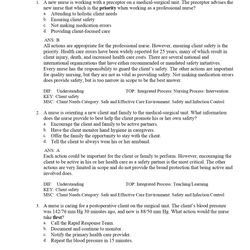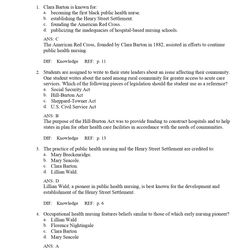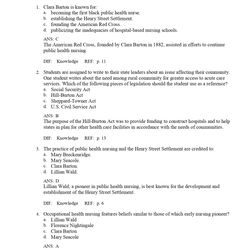TEST -BANK ADVANCED HEALTH ASSESSMENT
- TEST -BANK ADVANCED HEALTH ASSESSMENT
Chapter 19: Women’s Health Disorders
Chapter 1: Cardiovascular Disorders
Clinical Guidelines in Primary Care 4th Edition Test bank
MULTIPLE CHOICE
1. The nurse is aware that the muscle layer of the heart, which is responsible for the hearts
contraction, is the:
a. endocardium.
b. pericardium.
c. mediastinum.
d. myocardium.
ANS: D
The myocardium is the specialized muscle layer that allows the heart to contract.
2. The nurse clarifies that the master pacemaker of the heart is the:
a. left ventricle.
b. atrioventricular (AV) node.
c. sinoatrial (SA) node.
d. bundle of His.
ANS: C
The SA node is the master pacemaker of the heart.
3. The nurse is aware that the symptoms of an impending myocardial infarction (MI) differ in
women because acute chest pain is not present. Women are frequently misdiagnosed as having:
a. hepatitis A.
b. indigestion.
c. urinary infection.
d. menopausal complications.
ANS: B
If you need a professional to complete your college homework at a small fee, then reach out to
amazingclasshelp.com
Indigestion, gallbladder attack, anxiety attack, and depression are frequent misdiagnoses for
women having an MI.
4. The nurse identifies the LUBB sound of the LUBB/DUBB of the cardiac cycle as the sound of
the:
a. AV valves closing.
b. closure of the semilunar valves.
c. contraction of the papillary muscles.
d. contraction of the ventricles.
ANS: A
The LUBB is the first sound of a low pitch heard when the AV valves close.
5. A patient is admitted from the emergency department. The emergency department physician
notes the patient has a diagnosis of heart failure with a New York Heart Association (NYHA)
classification of IV. This indicates the patients condition as:
a. moderate heart failure.
b. severe heart failure.
c. congestive heart failure.
d. negligible heart failure.
ANS: B
Class IV: Severe; patient unable to perform any physical activity without discomfort. Angina or
symptoms of cardiac inefficiency may develop at rest.
6. The nurse assesses that the home health patient has no signs or symptoms of heart failure, but
does have a history of rheumatic fever and has been recently diagnosed with diabetes mellitus.
The nurse is aware that using the American College of Cardiology and the American Heart
Association (ACC/AHA) staging, this patient would be a:
a. stage A.
b. stage B.
c. stage C.
d. stage D.
ANS: A
The ACC/AHA staging describes stage A as a person without symptoms of heart failure, but
with primary conditions associated with the development of the disease




































